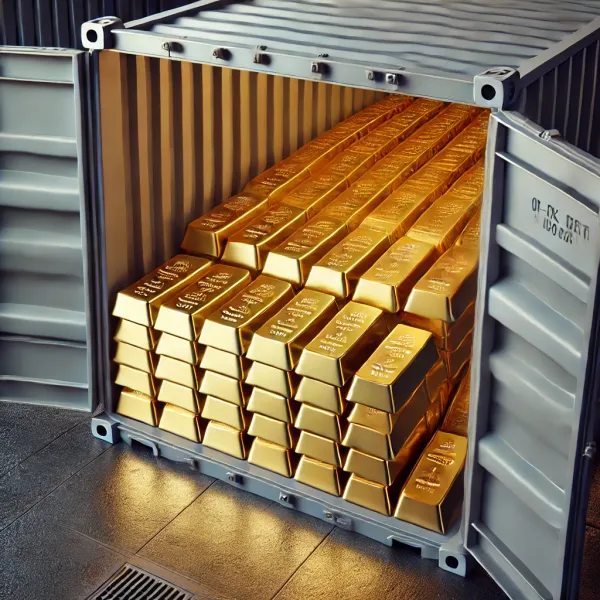Global supply chains are getting a makeover — and everyone’s a winner?

(Originally posted in November 2022 on Medium, still extremely relevant)
Global supply chains have been the subject of many a theory crafter’s attention this year. We’ve heard everything: China will lose it all, Mexico will be the new hub, India is the new China, and of course “nothing will change.” Supply chains are definitely changing, in a way where everyone is a potential winner.
Nearshoring is evolving into a new format
As previously mentioned in the second part of this three-part series: nearshoring 2.0 is here. We’re no longer nearshoring close to the end consumer, at least not solely. Today the global supply chain stakeholders are applying a hybrid nearshoring model, exploiting every potential advantage to get the most out of their supply chain. Supply chains are no longer “that part of the process that just happens”. International shipping is no longer just a cost centre.
We’re seeing a two-fold change to nearshoring: close to the consumer and close to the original manufacturer. Think of it as a “China+1” or even “China+2” approach. Brands such as Apple are choosing to spread their manufacturing operations, making different products in China, India, and Vietnam. Others are diversifying their supply chain by gradually moving away from China towards Vietnam, Thailand, and India. This latter group may leave China altogether given enough time and incentive.
Rather unsurprisingly, financial and compliance incentives drive global supply chain change. Central and South America may be a bigger winner on a mid-term timescale, with Mexico already starting to benefit from the China exodus in large part provoked by the tariffs in place on Chinese-sourced goods. Countries like Brazil and Chile may also be set to benefit in the longer term, as a move away from China and towards Mexico will have a knock-on effect. Chile has the added benefit of being rich in natural resources that will be in high demand, with astute ocean carriers already investing in infrastructure on-site.
Although China is losing manufacturing volumes, they may still retain some high value, as well as some markets dependent on raw materials that China has in greater supply. It’s no secret that China supplies about a third of the raw materials the EU requires, and with China’s growing presence in Africa, they are likely to evolve from the world’s factory to the world’s dealer. Chinese-owned manufacturing plants are also popping up along the US-Mexico border. They may not be manufacturing goods in China, but the Chinese are still reaping the rewards, even more so by sowing seeds in Mexico, on the US’s doorstep.
Strategic reshoring will grow out of necessity, on the back of shortages
What do paracetamol in France, high-tech chips in the US, and toilet paper in Australia all have in common? Yep, they have all been in short supply at some point over the last two years. Granted the great toilet paper shortage of 2021 was a mixture of human stupidity and greedy scalpers trying to make a quick buck, but the other two are a direct result of failing supply chains mixed with protective measures. India for one decided to keep paracetamol destined for foreign markets for themselves, as they have also recently done with rice. Can we really blame them?
It’s difficult to say exactly what will we will be reshoring back to the US and Europe, but strategic goods such as electronic chips are already seeing initiatives in the USA and France, amongst others.
This attempt to become more self-sufficient can only succeed thanks to a mixture of technological advances in manufacturing techniques and increased demand. Combined, the investment in robots and highly skilled operators to manufacture high-tech goods and pharmaceuticals makes sense, and can potentially be very profitable, especially with government incentives.
For the rest, the USA will nearshore to Mexico, which will then end-up nearshoring further south when costs become too great. As for Europe? It’s not as simple. The way employment laws are set up on the old continent, along with high salaries and the insane cost of living increases (that although brought on by temporary inflation, will most likely not return to previous levels) mean that dependency on SEA for manufacturing is likely to remain relevant. In fact, countries like France appear to be ready to outsource more, as they attempt to steal the UK’s thunder and become a tertiary giant, leaving manufacturing and industry behind. Spoiler alert: it will not work.
Global supply chains need to change to save the planet.
With these changes, the focus remains on solving the supply chain issues that Covid and the Suez Canal, along with problematic relationships with China, have brought to light in a big way.
Do they actually contribute to sustainable supply chains and saving the planet?
Ye..N..Y.. Maybe?
There are clearly some huge benefits to nearshoring US consumer needs to Central and South America. The shorter transit times are not only theoretically cheaper, but they should also be less polluting. The potential for rail from Mexico to the US is also an amazing step towards supply chain sustainability.
Concerns however remain in the way we manufacture. Whether in South America or SEA, if we do not change our ways and simply continue to pollute willy-nilly, we’re just shifting the blame from one geography to another. Yet the real fault lies with the consumer market, not the manufacturer.
Nearshoring closer to the consumer is definitely the way to go, and is entirely possible for North American consumer markets. The benefits will likely be immense for consumers in these locations, as well as for neighbouring countries looking to grow and create jobs.
We are clearly at a turning point as a consumer society, and these may be the first steps towards changing the way we consume goods. If we can shift from mass consumerism, and drop our fast-fashion and “cheap” or “bargain” ways, we may be able to make a real impact. And frankly, who wouldn’t want to buy higher-quality products made locally, rather than low-quality, mass-produced goods, from the other side of the world?
Whatever happens, logisticians, the world over are going to need to keep their ears to the ground and be ready to adapt and pivot, or face being left behind.
I'm Anthony, ex-WiseTech'er and Logistics Technology nerd.
You can find me on LinkedIn: https://www.linkedin.com/in/anthonymlr/
And I may start using Twitter if Elon doesn't kill it first: https://twitter.com/Anthonymlr1
My opinions are my own, although I'm sometimes told they are shared by many, yet voiced by few.
My goal is to make Logistics Technology a healthier place and to provide everyone with the kind of information they need to decrypt this magical and mad industry we either love or hate depending on the day and if someone has blocked the Suez Canal again.





